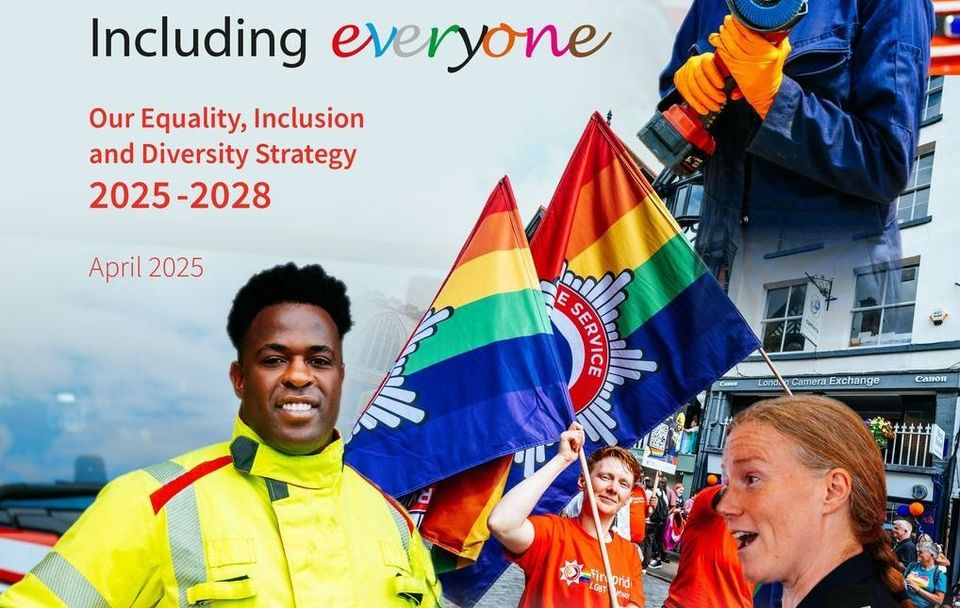- Your service
- Key information
- Strategies and policies
- Equality and Diversity

The principles of equality, diversity and inclusion (EDI) are at the heart of everything Cheshire Fire and Rescue Service does.
Without a workforce that represents, understands and meets the needs of our increasingly diverse communities, we simply could not keep people safe from fire and other harm. That is the reason why one of our four core values is being inclusive, by acting fairly, with integrity, respect and without prejudice.
By making EDI a priority over the last 20 years, we have already made significant progress. Through one of the UK’s most ambitious prevention programmes, every year we engage with thousands of people of all ages and backgrounds, using our understanding of the different risks they face to target our efforts where they will have greatest impact. We also work with an increasingly diverse range of businesses and commercial premises to ensure they meet their fire safety responsibilities. As a result, we’re seeing fewer fire incidents than ever before and fewer deaths and injuries from fire.
The firefighters, community safety teams and professional services colleagues who deliver this lifesaving work now include more women, people from minority ethnic backgrounds, people with disabilities and people who identify as lesbian, gay, bi or trans (LGBT) than ever before. They are able to be themselves, and give their best at work and to their communities, because together we have created a service that His Majesty’s Inspectorate of Constabulary and Fire and Rescue Services described in 2023 as “good at ensuring fairness and promoting diversity”, and has “well-defined values” and “a positive working culture”.

The theme of our EDI Strategy 2025-28 is Including EVERYONE, because we believe that everyone benefits from a fire and rescue service that values fairness, understanding and mutual respect.

Our most recent EDI Annual Report provides an update on progress towards its aims and objectives during the final year of our EDI Strategy 2021-25.
All public sector organisations and UK companies with 250 or more employees are required under the Equality Act 2010 to publish a Gender Pay Gap Report every year.
This analyses and explains the difference between mean (average) and median (mid-point) earnings of men and women in the workplace. It also sets out actions to address any gap.
The gender pay gap is a different concept to that of equal pay. Men and women, by law, must be paid equally for work of the same or similar value, and the Service pays men and women equally at every grade. However, if one gender dominates higher pay graded roles, then there will be a gender pay gap.

Our most recent Gender Pay Gap Report, showing a snapshot of data at March 31, 2024.
Gender Pay Gap Report 2023 (new window)
Gender Pay Gap Report 2022 (new window)
Gender Pay Gap Report 2021 (new window)
Gender Pay Gap Report 2020 (new window)
Gender Pay Gap Report 2019 (new window)
If you apply for a job with us, have a Safe and Well visit or business safety inspection, take part in one of our community safety programmes or complete a survey, we may ask you some questions about your background.
These are questions about the parts of your identity protected by the Equality Act 2010. These include your age, disability, ethnicity, gender reassignment status, marriage or civil partnership status, pregnancy or maternity status, religion, sex and sexual orientation.
You do not need to answer these questions if you feel uncomfortable doing so. They are optional.
If you do answer them, your responses will be kept confidential and will not be linked to you by name or other information that might identify you. For example, the people assessing job applications will not be able to see your equality information.
Why do we ask these questions? In short, to assure ourselves that we are targeting our work at the people most at risk of fire and other emergencies.
We know, for example, that people over the age of 65 who live alone are more likely to die or be seriously injured in a fire. For cultural or historic reasons, people from some communities might be reluctant to engage with people in uniform. And the role of firefighter has not traditionally appealed to women or lesbian, gay, bi or trans (LGBT+) people.
By taking a few moments to answer some or all of these questions, you are helping us to understand whether we are providing the best possible fire and rescue service, to as many people as possible.
As a matter of course and tradition, we continuously fly the national flag of the United Kingdom of Great Britain and Northern Ireland - the Union Flag - outside all our fire stations and at our headquarters site.
The Union Flag will be lowered to half mast in the event of the death of a serving member of staff, a colleague from another fire and rescue service (depending on circumstances) or a member of the Royal Family.
In accordance with our EDI objective to be a strong and visible ally to people who feel underrepresented, we fly other flags for short periods at certain times of year. This is in line with UK Government guidance that permits the flying of flags that refer to specific events of limited duration taking place in those premises.
In our case, these include flags to celebrate our participation in:
Black History Month in October
Disability Pride in July
Emergency Services Day on 9 September
International Women’s Day on 8 March
LGBT History Month each February and LGBT pride events local to that particular fire station.
In the event of the death of a fire and rescue service colleague or a member of the Royal Family during one of these celebrations, we would revert to the Union Flag and lower it to half mast.
Last updated: Thursday, 2 October 2025